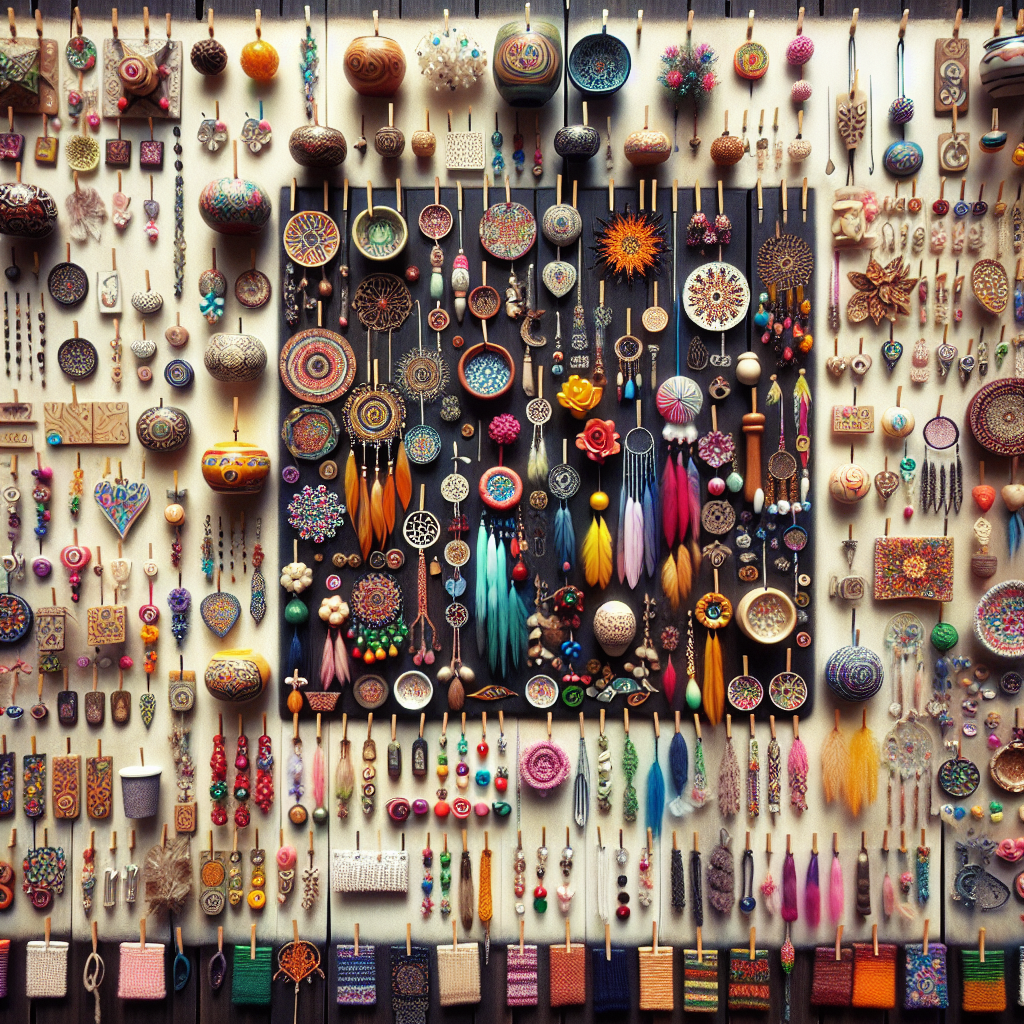Welcome back to Part two of “Essential Items for a Successful Craft Fair”! In this video by Wood Wine and Crafts, they cover all the necessary items that vendors should bring to a craft fair. From tents and tables to chairs and signs, they go into detail about how these items contribute to a vendor’s success. The video also emphasizes the importance of adding height to the table for better visibility and recommends using containers or totes for storage and transportation. With tips on accepting various payment methods, bringing water bottles and snacks, and having the right amount of cash for making change, this video provides valuable insights for anyone new to craft fairs or looking to improve their booth set-up. By sharing their own experiences and reflections on previous events, they offer practical advice on maximizing sales and engaging potential customers. Don’t miss out on learning these 15 must-haves for a craft fair!
Essential Items for a Craft Fair
Tent
A good tent is an essential item for a craft fair. It provides shelter and protection from the elements, such as rain or extreme heat. It is recommended to invest in a sturdy tent with detachable sides that can easily be put up or taken down. Make sure the tent comes with stakes for grass and weights for pavement, as these will ensure stability and prevent the tent from blowing away. Additionally, having a tent with windows can be beneficial, as it allows natural light into your booth and provides a welcoming atmosphere for potential customers.
Tables
Tables are a must-have item for displaying your crafts at a craft fair. It is recommended to have at least two eight-foot tables that fold in half for easy transportation and storage. These tables provide ample space for showcasing your products and allow for easy browsing for customers. Consider covering the tables with drop cloths to add a professional touch to your booth and protect your crafts from scratches or spills.
Chairs
Craft fairs can be long and exhausting, so having at least one chair for yourself is essential. It provides a much-needed resting spot during slower periods and allows you to stay comfortable throughout the event. If you have a helper or someone joining you at the craft fair, make sure to have an extra chair available for them as well.
Signage
Having clear and eye-catching signage is crucial for attracting customers to your booth. Consider creating a sign that showcases your business name or logo and briefly describes what you’re selling. Make sure the signage is visible from a distance and easy to read. If space is limited, attaching a sign to the front of your tablecloth or using a hanging banner can be effective alternatives.
Adding Height to Tables
Adding height to your tables is important for better visibility and catching the attention of potential customers. Consider using decorative boxes, risers, or a small bookshelf to create different levels on your table. This allows your crafts to stand out and be easily seen by passersby. Experiment with different ways to add visual interest and draw people into your booth.
Storage and Transportation Containers
Investing in stackable and easy-to-carry containers is essential for organizing your items before, during, and after the craft fair. Plastic totes are a great option as they protect your crafts from water damage and allow for easy stacking and transport. You can categorize your crafts and supplies in different totes to stay organized throughout the event.
Accepting Various Payment Methods
To ensure a smooth customer experience, it is recommended to accept various payment methods at your craft fair booth. Cash is still a popular choice, so make sure to have a sufficient amount of change in different denominations. Additionally, consider using mobile payment options such as Venmo, PayPal, and Square, as they provide convenient and contactless options for customers who prefer not to carry cash.
Water Bottles and Snacks
Craft fairs can be physically demanding, so it’s important to stay hydrated and nourished throughout the event. Keep a supply of water bottles and snacks in your booth to keep your energy levels up. This ensures that you can stay focused and provide excellent customer service even during busy periods.
Amount and Denominations of Cash
Having the right amount and denominations of cash is crucial for making change and conducting cash transactions smoothly. It is recommended to have a combination of ones, fives, and tens to provide sufficient change for customers. Bringing around $15 to $20 in ones, $20 worth of fives, and $10 to $20 worth of tens is a good starting point. Adjust the amounts based on the average price of your crafts and the expected number of cash transactions.
Stackable and Easy-to-Carry Containers
Investing in stackable and easy-to-carry containers is essential for organizing your crafts and supplies before, during, and after the craft fair. Plastic totes are a great option as they protect your items from damage and provide ease of transport. Being able to stack the containers saves space in your vehicle and allows for efficient setup and teardown at the event. Consider labeling the containers to easily identify the contents without having to open each one.
Setting Up at the Craft Fair
Weather Forecast
Checking the weather forecast for the day of the craft fair is crucial in ensuring that you are prepared for any potential weather conditions. If rain is expected, it is important to have waterproof covers for your crafts and supplies, as well as extra towels or tarps to protect your booth. If it’s going to be hot, make sure to bring sunscreen and consider having a portable fan to keep yourself and customers comfortable.
Hopes for Attendance
As a vendor, it is natural to have hopes for a good turnout at the craft fair. You may hope that many people will come out, browse your booth, and potentially make purchases. However, it is important to manage expectations and understand that attendance can vary based on factors such as location, timing, and overall interest in the craft fair. Stay positive and focus on providing a great experience for the customers who do come by your booth.
Packing Up Early
If the weather forecast indicates that there will be rain during the craft fair, it may be wise to consider packing up early to avoid potential damage to your crafts and equipment. Set a timeframe for when you plan to start packing up, such as an hour or two before the predicted heavy rain. Communicate with the event organizers and nearby vendors to ensure a smooth and organized process.
Tent with Nifty Windows
Having a tent with windows can make a significant difference in the overall look and feel of your booth. The windows allow natural light to enter, creating a bright and inviting atmosphere. They also give potential customers a glimpse of your crafts from outside, enticing them to come closer for a better look. Consider investing in a tent with removable window panels for maximum flexibility.
Reflecting on the Event
After the craft fair, take some time to reflect on the event and evaluate how it went for you. Consider factors such as the weather, attendance, and overall sales. Reflecting on your experience allows you to identify areas for improvement and make adjustments for future craft fairs. Celebrate any successes or positive feedback you received and take note of lessons learned for future reference.
Sales and Potential Customers
Craft fairs provide an excellent opportunity to make sales and connect with potential customers. Engage with visitors to your booth, answer any questions they may have, and provide detailed information about your crafts. Don’t be afraid to showcase your products and share the stories behind them. Building connections with customers can lead to repeat business and positive word-of-mouth recommendations.
Breaking Even on Costs
While making a profit is always the goal, breaking even on rental fees and material costs can be considered a win for craft fairs, especially if it’s your first time or if the event didn’t meet your attendance expectations. Calculate your total expenses, including booth rental, supplies, and any related costs. By covering these expenses, you have the opportunity to gain exposure, build your brand, and potentially make long-term customers.
Cash and Credit Card Sales
Understanding the breakdown of your sales, both in cash and credit cards, helps you track and analyze your business’s financial performance at the craft fair. Make a note of how much of your total sales were made in cash and how much was paid using credit cards or mobile payment options. This information allows you to evaluate the effectiveness of different payment methods and adjust your future strategies accordingly.
Listing Unsold Items on Etsy
If you have unsold items after the craft fair, consider listing them on Etsy or other online marketplaces. This allows you to reach a wider audience and potentially make sales even after the event. Take quality product photos, write compelling descriptions, and set competitive prices to attract potential customers. Utilizing online platforms extends the lifespan of your crafts and gives them a chance to find the perfect buyer.


